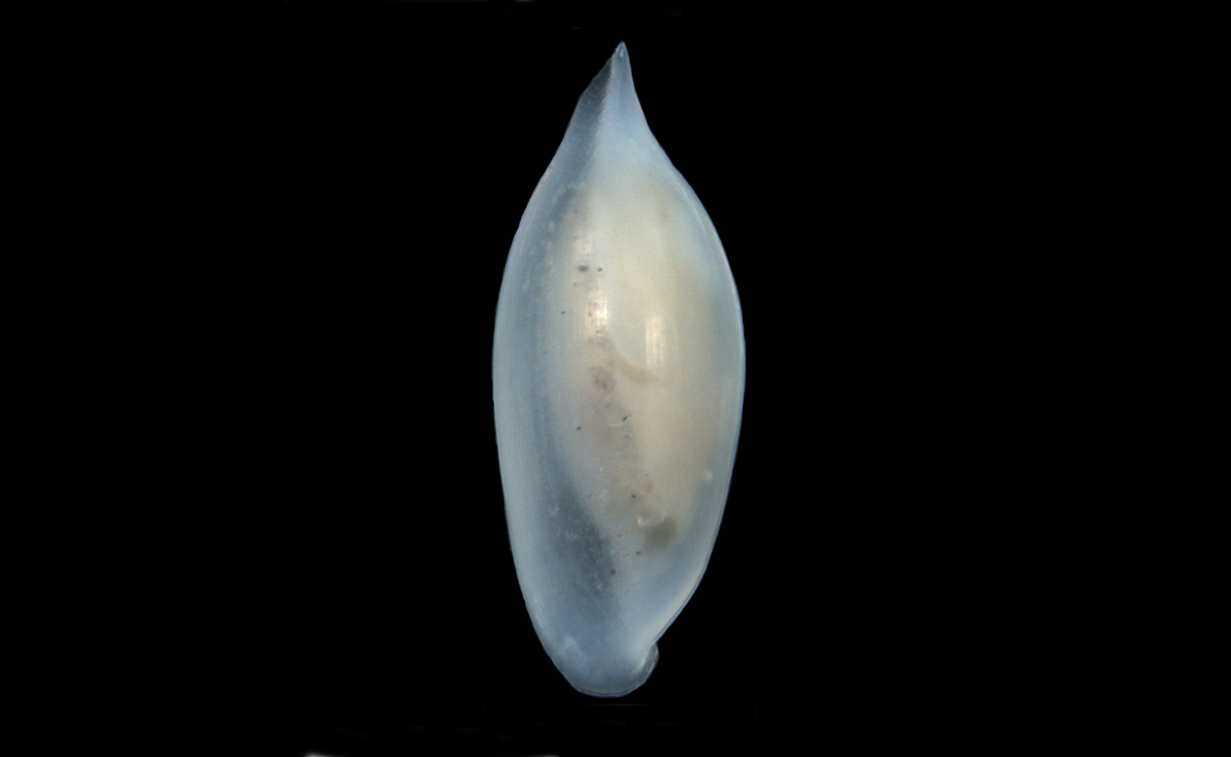Volvulella acuminata
Shell description
The thin shell is external and transparent, usually with an elongate cylindrical shape, the hind part is pointed. The opening is narrow, but extends the length of the shell. The shell is partially umbilicated. The shell has a pattern consisting of growth lines and spiral grooves; the pattern is more prominent in the front and hind part of the shell. Larger specimens of this species are more elongate and slender while shorter specimens are more oval in shape (Harry 1967). The length of the shell varies between 1.7–3.2 mm.
Animal description
The body is white in colour, and the head shield is lobed towards the back and there is no middle line. There are no side extensions of the foot (parapodial lobes) and no extension of the mantle under the snail (pallial lobe). The eyes of this species are visible (Thompson 1988). Nothing is known about the internal anatomy of this species.
Anatomy
Unknown.
Ecology
Occurs on sand, muddy sand, clay and gravel in depths down to 800 m (Thompson 1988, Høisæter 2009).
Geographical distribution
Occurs in Norway from Trondheimsfjorden and southwards, the North Sea, and the British Isles and down to the Mediterranean Sea and Angola (Thompson 1988, Høisæter 2009).
References
Harry HW (1967). A review of the living tectibranch snails of the genus Volvulella, with descriptions of a new subgenus and species from Texas. The Veliger 10: 133-147.
Høisæter T (2009). Distribution of marine, benthic, shell bearing gastropods along the Norwegian coast. Fauna Norvegica 28: 5-106.
Thompson TE (1988). Molluscs: Benthic Opisthobranchs. In: Brill EJ og Backhuys W. Leiden. Mollusca, Gastropoda: keys and notes for the identification of the species. Vol. 8. New York, Copenhagen, Cologne. 356 sider.


